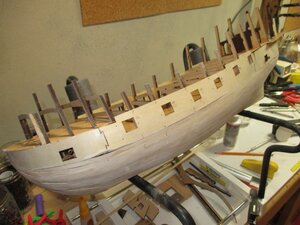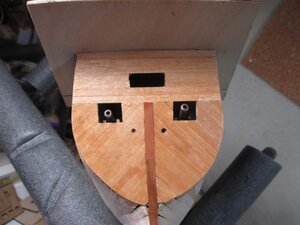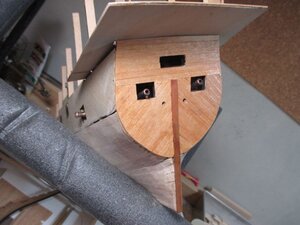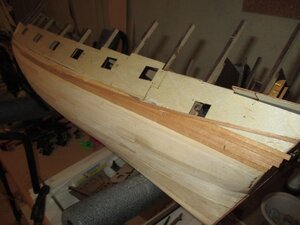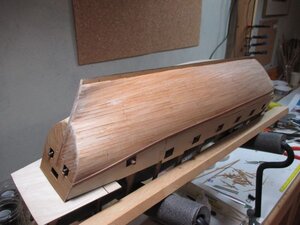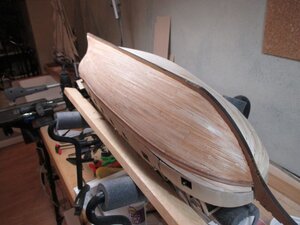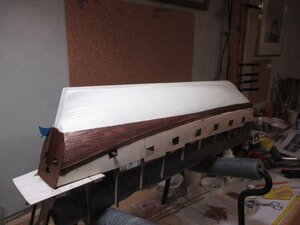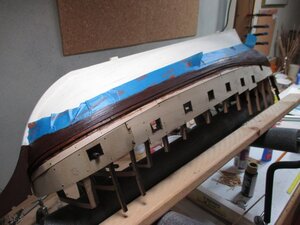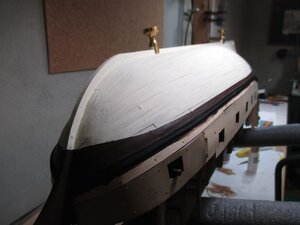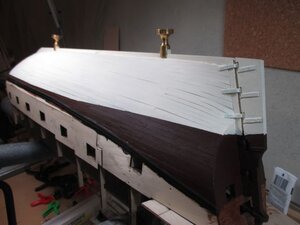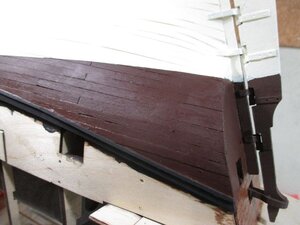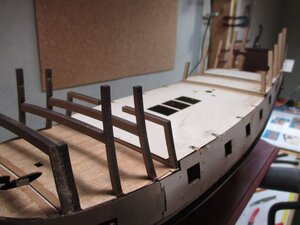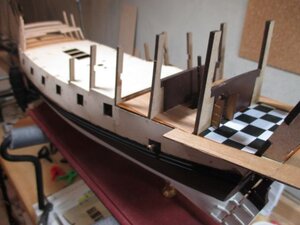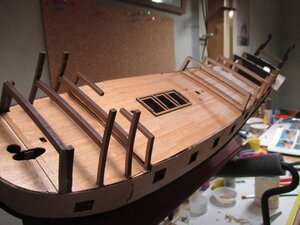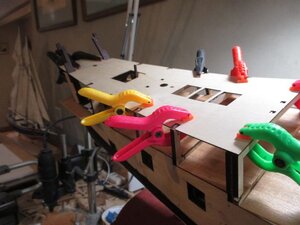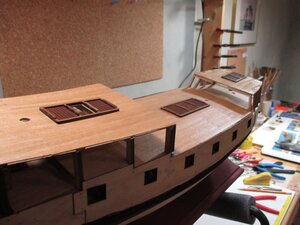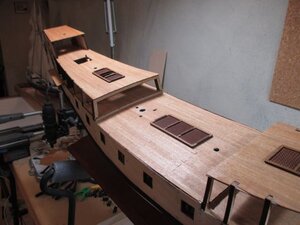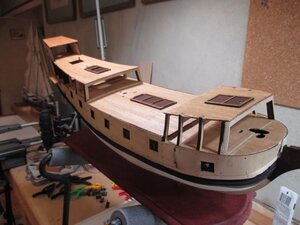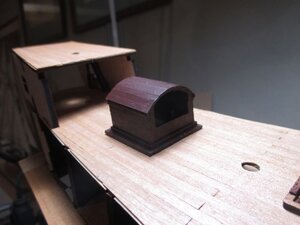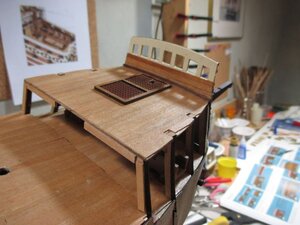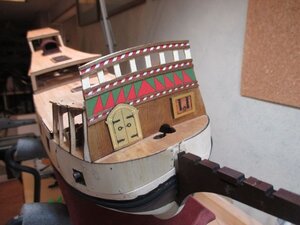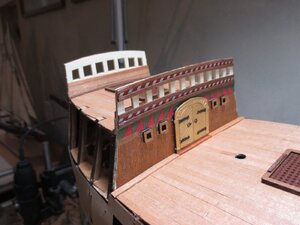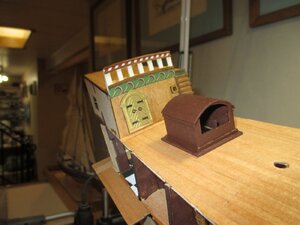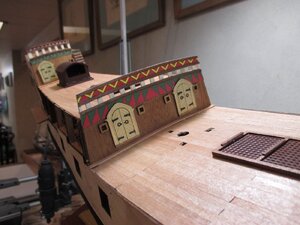Working on the decks now. The decks use the plywood templates that are then planked. These photos show the main deck templates in place and the main deck planked. The last photo shows the template for the quarter deck clamped in place. Once the glue sets I can plank it. Templates are OK to use but they do have some issues. Fitment is a struggle. I had to clip slots and juggle uprights to get a proper fit. In the case of the quarter deck I cut off the bulkhead supports prior to setting the quarter deck template. The instructions suggest setting the template in place and then cutting off the uprights. But cutting them first was the only way I could get a fit. In the photo you can clearly see where I cut off the bulkhead supports. In the end things will look good but it is a process getting there!
When using templates such as in the Victory Models kit the build structure must be very precise to get a good fit for the templates. In this case relationships are critical. That is just not going to happen in the average build...too many variables. Lastly, there is a decided lack of support structures for the templates to attach to, so you will end up needing to secure the templates to what structures there are by adding pins into the supports.
View attachment 169234
View attachment 169235
View attachment 169236
View attachment 169237
